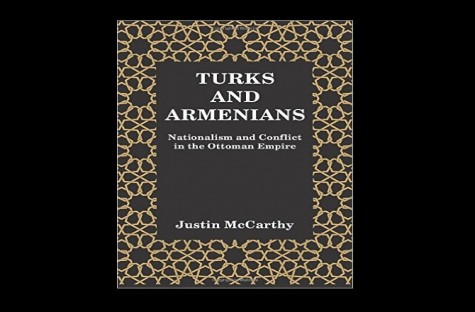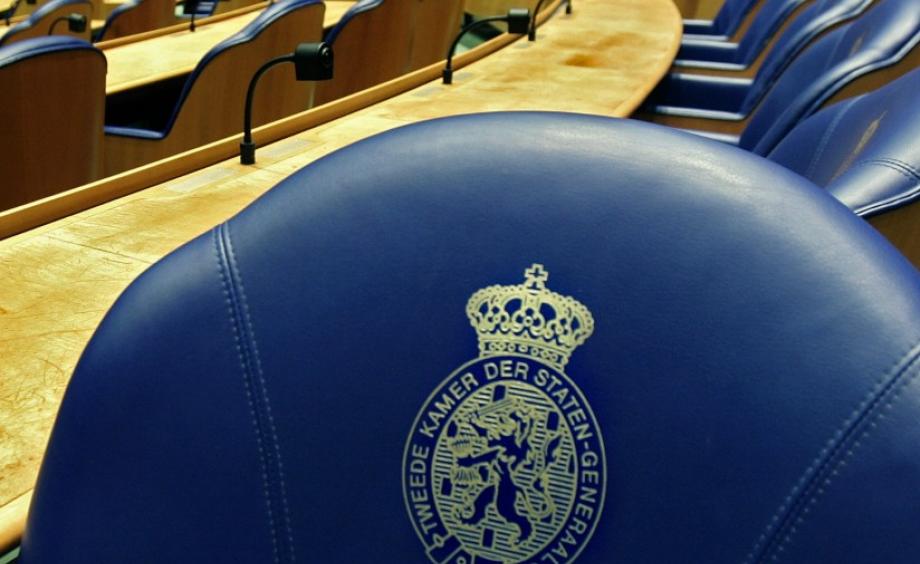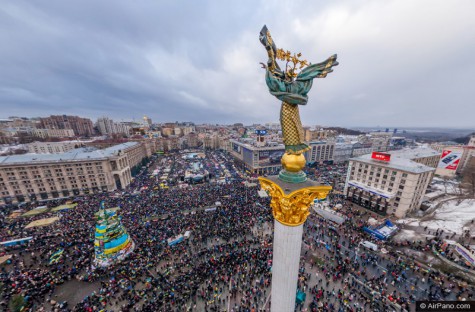Chapter Three: Armenian Revolutionaries
In the 3rd chapter titled “Armenian Revolutionaries”, Prof. McCarthy writes about the two major Armenian revolutionary societies: Dashnaks and Hunchaks. He elaborates the formation process of these revolutionary groups, their ideologies, goals, and activities. While doing this, he demonstrates Armenian revolutionary uprising with the help of the maps of Eastern and Southeastern Anatolia, saving the readers from the event-space dilemma. He also stays away from shallow explanations and biased arguments and provides cause-and-effect analysis to understand the conflicts and complicated relationships in these regions.
First of all, Prof. McCarthy states that the Armenian revolutionaries were influenced by revolutionary and nationalistic ideologies which was spread among the Ottoman Armenians by Europeans and Americans. He presents the advantages and disadvantages of the Armenian revolutionaries and the Ottoman government in their conflict. However, he points out that success of the Armenian rebellion depended on the support from European powers.
McCarthy begins to explain the development of the Armenian revolts with the foundation of the Hunchakian Revolutionary Party in Geneva, Switzerland in 1887 by Armenian students from the Russian Empire. He states that the Hunchaks wanted to create an socialist Armenian state and believed that only after the Ottoman Armenians were “liberated” would the Armenians in Iran and Russia be joined with them in one state. He also touches upon Hunchaks’ official program, which called for violence and terrorism to achieve their goals.
He expresses that the Hunchaks took the Bulgarian Revolt in 1876 as a guideline to create their own nationalist state out of the Ottoman Empire. An Armenian revolt would follow the plan seen in Bulgaria: First there would be revolt and attack on Muslims, leading to reprisals. Europeans would condemn the Ottomans for the death of Christians, taking no notice of the slaughter of Muslims. Finally, either through diplomacy or war, Europeans would force the Ottomans to cede territory to a new Armenian land and Muslims would be forced out or killed, leaving an Armenian majority.
However, Prof. McCarthy states that Hunchak’s plan taken from the Bulgaria example did not work for the Armenians. The main reason was that in Bulgaria, the majority of the population was ethnically and religiously Bulgarian and Christian, but it was not the case for Armenians. If they wanted to create an Armenia, they had to kill or forcefully relocate more than half of the population, which was obviously not possible for Armenians to do. Therefore, their purposes depended on interventions of Europe, but the Europeans were unwilling to intervene.
In the light of such a background, Prof. McCarthy talks about the Hunchak Rebellion in Anatolia between 1894-96. Revolutionary gangs, mainly from Russia, attacked Muslims in towns and villages. They attacked Turks and Kurds (McCarthy uses the term Muslim to define all of them) and Muslims responded Armenians with their own counter attack. Such events took place in Bayburt, Muş, Tokat, Sasun, and Sivas regions, and shortly after, all over eastern Anatolia. Revolutionaries destroyed Muslim’s houses, shops and attacked soldiers and civilians. As one can guess, furious Muslim groups also lashed out at Armenians. While explaining the Hunchak Rebellion, Prof. McCarthy puts all historical realities on the table and does not show only one side’s pains and sorrows during the Hunchak Rebellion, which is essential when writing about historical events.
Another crucial Armenian revolutionary group was the Armenian Revolutionary Federation (Dashnaks), which was founded by Armenians in the Russian Empire. Prof. McCharthy states that the Dashnaks were more successful and planned than the Hunchaks. Like the Hunchaks, the Dashnaks aimed to create an Armenian state and believed that an European intervention was necessary. He states that although the Dashnaks were socialist, they emphasized on nationalism to unite all Armenian population.
He notes that Dashnak activities and main Dashnak organizers were known by the Ottoman government but that the government could not take necessary action due to the fear of an European intervention. Europeans were symphatetic to Armenians due to the anti-Turkish propaganda and religious prejudice. Any action against rebel Armenians was portrayed in the European press as attacks on innocents.
Prof. McCarthy also states that the Dashnaks and Hunchaks murdered Armenians who did not join their cause or who stood against them. He also states that these groups forced Armenians to pay ‘revolutionary taxes’, ‘revolutionary donations’ and other funds. Thus, Prof.McCarthy points out that Armenians had no choice but join the revolutionaries and fund their cause.
He also elaborates on the smuggling operations of the Armenian revolutionaries. Prof. McCarthy indicates that Armenians revolutionaries, in order to arm themselves, were smuggling weapons from Russia almost immediately after the Russo-Turkish War of 1877-78 until World War I. He also states that revolutionaries smuggled in fighters for the cause. The main routes for smuggled armes and fighters were on the Ottoman-Russian border or from Russian territory through Iran. Most of the time, the Russian government and the Russian border guard generally overlooked the smuggling. By World War I, the Armenian revolutionaries were armed and ready to rebel.

 THE DUTCH PARLIAMENT’S FEBRUARY 22 DECISION ON THE 1915 EVENTS
THE DUTCH PARLIAMENT’S FEBRUARY 22 DECISION ON THE 1915 EVENTS
 CHANGING PERCEPTIONS: THE EUROPEAN UNION INSTITUTE AND TÜRKİYE'S ROLE IN EU SECURITY POLICY
CHANGING PERCEPTIONS: THE EUROPEAN UNION INSTITUTE AND TÜRKİYE'S ROLE IN EU SECURITY POLICY
 NİKOL PASHİNYAN’S SPEECH IN THE WORLD WAR I ARMISTICE EVENT REVEALS HIS INTENTIONS REGARDING 1915 EVENTS
NİKOL PASHİNYAN’S SPEECH IN THE WORLD WAR I ARMISTICE EVENT REVEALS HIS INTENTIONS REGARDING 1915 EVENTS
 A BRIEF EVALUATION AFTER MINSK SUMMIT
A BRIEF EVALUATION AFTER MINSK SUMMIT
 MACRON’S PROPOSAL OF CREATING EUROPEAN POLITICAL COMMUNITY AND NATO'S GUARDIAN ANGEL WINGS
MACRON’S PROPOSAL OF CREATING EUROPEAN POLITICAL COMMUNITY AND NATO'S GUARDIAN ANGEL WINGS




























